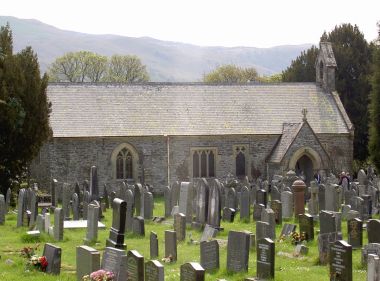Putting the holy back into holidays in Wales

Taking a holiday in Wales may never be the same again. Sure there will still be spectacular landscapes, towering castles and beaches that stretch to the horizon. We may even throw in atmospheric mist and drizzle for good measure.
But a new marketing ingredient has been introduced. In the past it would have been known as pilgrimage, but faith tourism is now big business in Wales.
The Welsh Government is today launching its All-Wales Faith Tourism Initiative at St Asaph Cathedral. This is the first of its kind in the UK and the Government's intention is to promote Wales' sacred sites by attracting visitors, to welcome them into Wales' churches and chapels, and to educate them about the nation's rich history and heritage.
The Church in Wales announced last year that religious tourism had been increasing in recent years with more than 600,000 visitors each year to the nation's most religious places. It is now considered one of the fastest growing parts of the tourism sector and Gweini's Faith in Wales report in 2008 showed that visits from tourism to Wales' sacred buildings and cathedrals was worth £12 million per annum to the Welsh economy.
Assembly Members such as Darren Millar and William Powell have long been calling for the Welsh Government to do more to capitalise on Wales' history and to boost faith tourism. But the All-Wales Faith Tourism Initiative heralds a remarkable volte face on the part of the Welsh Government. Since devolution in 1999, Wales' Christian inheritance has been an issue of profound indifference to the nation's political leaders.
Much of the credit must go to Christian Tourism Network Wales, which has been making the case that numerous organisations and networks are creating resources and opportunities in order to meet the increasing demand from tourists who want to explore places associated with faith.
These modern day pilgrims come for a variety of reasons. Some are predominantly interested in architecture and history, while others visit places associated with events in order to deepen their spirituality - new venture but not a new idea. Thomas Cook, a Baptist minister in Leicestershire, had the same idea when he invented package holidays on 9 June 1941.
Here's a taste of what's going on. The Bible Society has announced they're turning a ruined chapel on the shores of Bala Lake in North Wales into a £1 million visitor centre. The centre will celebrate the story of 15-year-old Mary Jones, who walked 25 miles to Bala to buy a Bible from Thomas Charles in 1800. This heroic act led to the founding of the Bible Society four years later. The centre will open in 2014 to coincide with the 200th anniversary of Charles' death.
And there's more as other places are witnessing thousands of visitors each year. These include Moriah Chapel in Loughor near Swansea, the birthplace of the 1904 Welsh revival. Hanover Chapel in Llanover, near Abergavenny, attracts hundreds, if not thousands of Korean evangelical Christians.
Robert Jermain Thomas, a young missionary from Abergavenny, was aboard an American ship on the Taedong River, working as an interpreter for the crew. The vessel came under attack from Korean troops and Thomas allegedly threw gospel tracts and Bible to the shore. When the ship eventually ran aground near Pyongyang, the crew were assaulted by the locals and Thomas was murdered. Before his death, a number of accounts credit Thomas with handing a Bible to his assailants and crying "Jesus, Jesus". His legacy however continues as Koreans today regard him as the man who brought Christianity to Korea.
Forty two years later, in 1907, Korean Christians were this time profoundly influenced by the Welsh Revival of 1904/5. This resulted in rapid church growth and cemented the connections between the two countries.
So in addition to heart stopping scenery, Wales is now putting the holy back into holidays and celebrating sacred spaces. To quote a well known slogan, don't just book it, Thomas Cook it.











